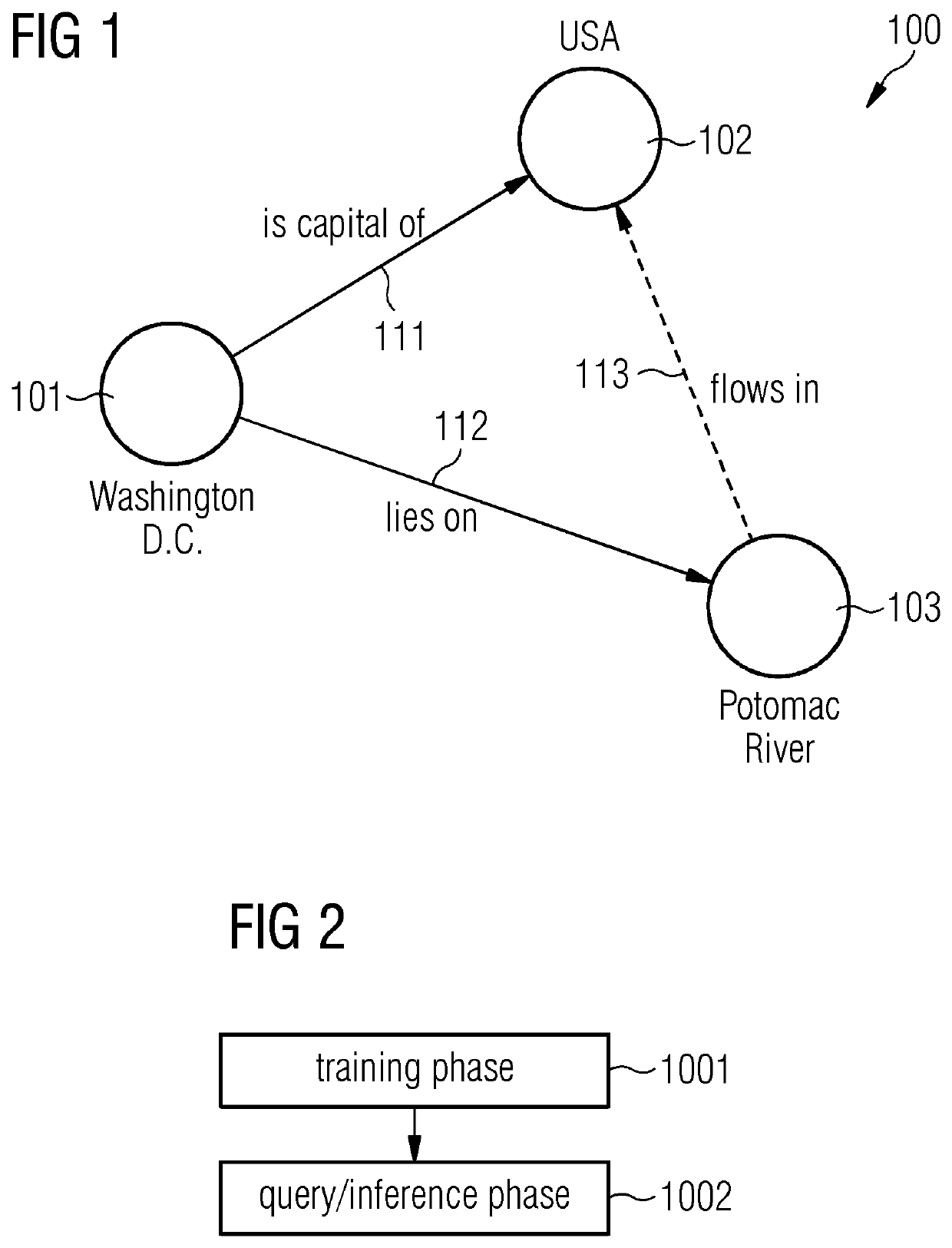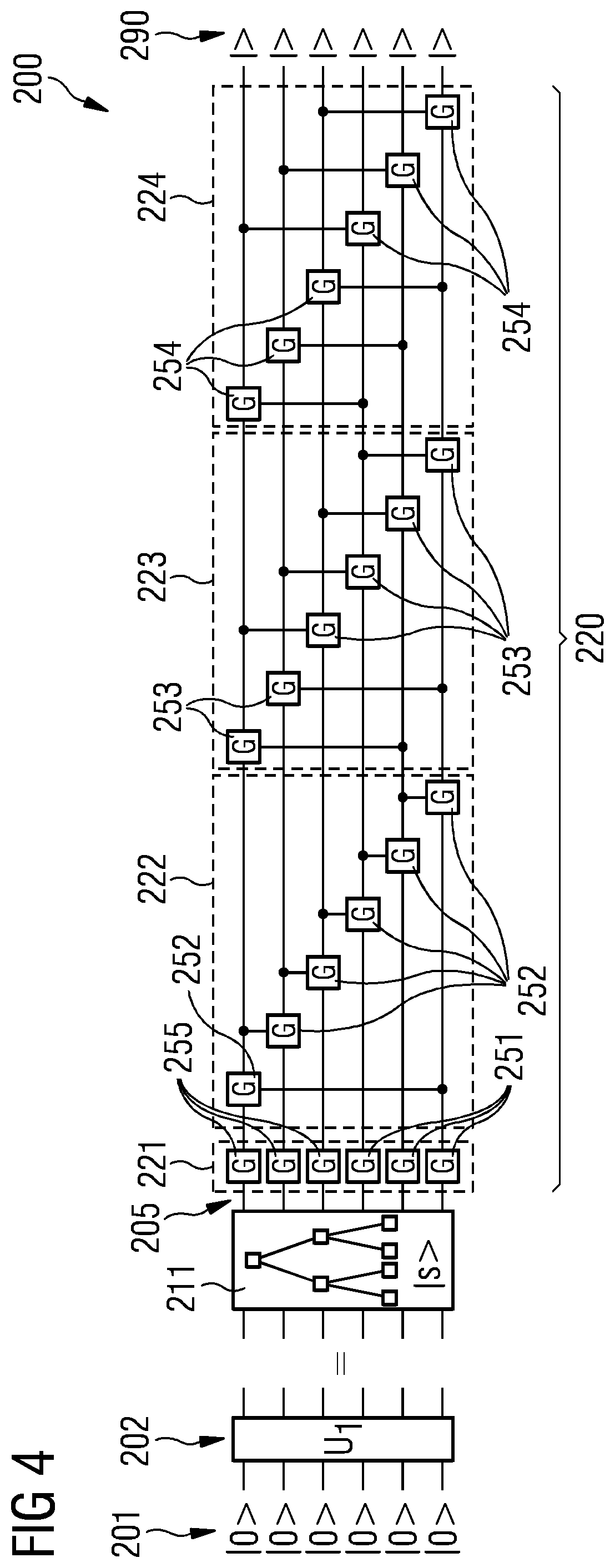Quantum-machine training of knowledge graphs
a knowledge graph and quantitative machine technology, applied in the field of knowledge graphs, can solve the problems of slow response to inductive inference tasks, slow training of knowledge graphs,
- Summary
- Abstract
- Description
- Claims
- Application Information
AI Technical Summary
Problems solved by technology
Method used
Image
Examples
example 1
Quantum Circuit Embedding
[0046]The following description gives a first example of implementing training using quantum computing. This first example is labelled Quantum Circuit Embedding (QCE). A high-level description of QCE is illustrated in connection with the flowchart of FIG. 3. For example, the method of FIG. 3 could be implemented on a quantum machine having multiple programmable quantum gates that can form a quantum circuit.
[0047]In detail, for each one of a plurality of semantic triples (s, p, o) of labeled training data (block 2000), a value function is determined by: preparing a respective subject quantum state (block 2001) representing the respective subject based on a classical representation of the respective subject; evolving the respective subject quantum state through a respective parameterized quantum circuit, values of parameters of the quantum circuit depending on the respective predicate, to thereby obtain a subject-predicate quantum state (block 2002); and prepa...
example 2
Fully-Parameterized Quantum Circuit Embedding
[0081]Instead of writing entity representations as normalized R-dimensional vectors—as in QCE—, entity representations are obtained through unitary circuit evolution applied to some initial un-superimposed quantum states. In this way, each entity is uniquely specified by the—unitary circuit architecture and the parameters of the unitary circuit of the respective entity, similar to the circuits definition of predicates—in QCE.
[0082]These techniques are labeled fully-parameterized QCE (fQCE), hereinafter. fQCE, hence, does not determine the subject quantum state and the object quantum state based on a classical representation of the subject and the object (cf. FIG. 4 and FIG. 5, modules 211, 311).
[0083]Compared to the QCE, the advantages of fQCE approach are the followings. First, latent features do not need to be loaded from a classical data structure and encoded as coefficients of quantum states, they are generated directly from the unita...
PUM
 Login to View More
Login to View More Abstract
Description
Claims
Application Information
 Login to View More
Login to View More - R&D
- Intellectual Property
- Life Sciences
- Materials
- Tech Scout
- Unparalleled Data Quality
- Higher Quality Content
- 60% Fewer Hallucinations
Browse by: Latest US Patents, China's latest patents, Technical Efficacy Thesaurus, Application Domain, Technology Topic, Popular Technical Reports.
© 2025 PatSnap. All rights reserved.Legal|Privacy policy|Modern Slavery Act Transparency Statement|Sitemap|About US| Contact US: help@patsnap.com



